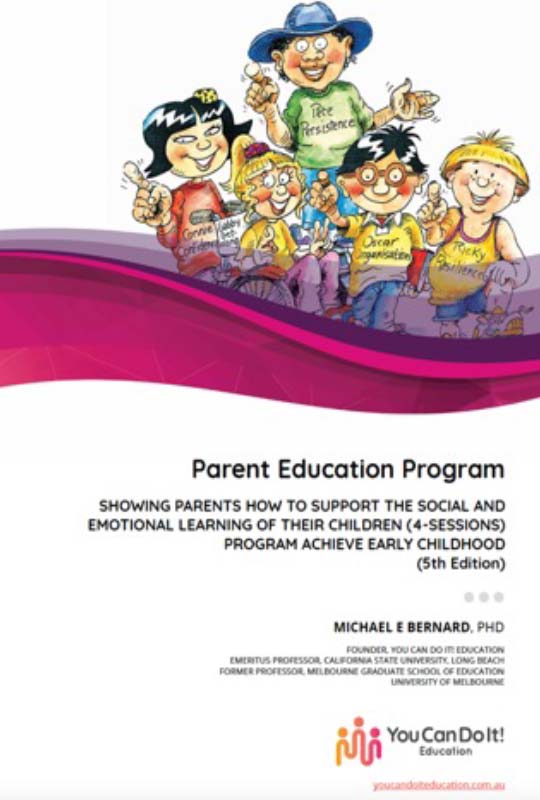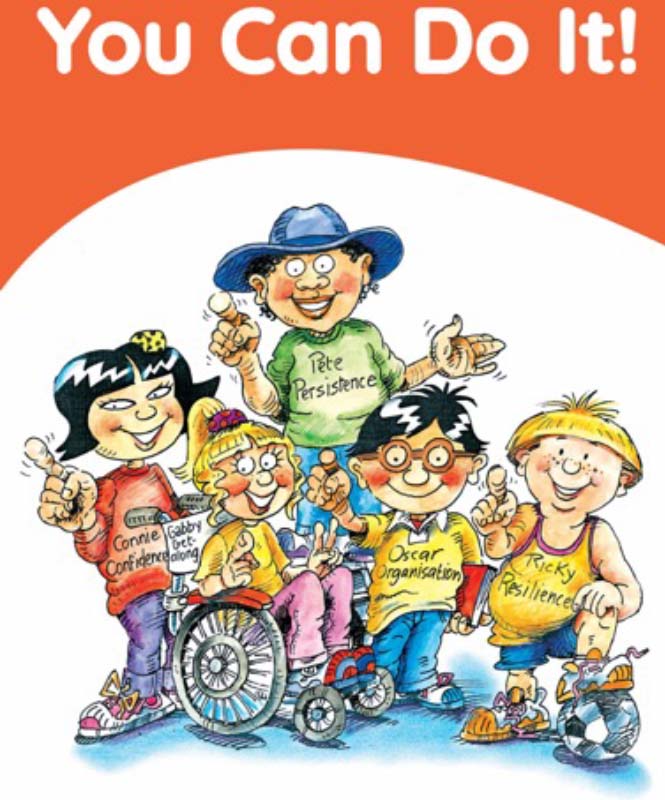
In a fun-filled way, You Can Do It! Education’s Program Achieve Early Childhood program helps you prepare young children with the behaviours and ways to think that strengthen the social-emotional learning skills (SELs) that are essential for their wellbeing and to learn successfully.
The 32 lessons in the program – your main teaching tool – are designed to make it easy to introduce your children to new ways of thinking and behaving that strengthen each of the five social-emotional (5 Keys) taught in the program: Confidence, Persistence, Organisation, Getting Along, Resilience. Each lesson takes approximately 40 minutes to complete in its’ entirety.
When teaching 3- and 4-year-old children, present each lesson in two 20-minute parts. Older children can engage in a lesson in one sitting.
It cannot be stressed enough that a regular weekly lesson needs to be timetabled.
When young children hear YCDI! language and conceptsinused in various contexts throughout the day, their knowledge and understanding of the concepts increase, as does their ability to put the concepts into action. They are also more likely to take YCDI’s 5 Keys and Language home and use them there.
Here are steps for implementing social and emotional learning taught in You Can Do It! Education successfully.
STEP 1. THE 5 KEYS
Introduce children to the five character puppets – their new classmates using their names. Each puppet represents one of the 5 Keys for success and happiness: Connie Confidence, Gabby Get Along, Oscar Organisation, Pete Persistence, Ricky Resilience; have your children greet them as their new classmates (use Program Achieve Early Childhood – Lesson 1).
By the end of the second week of teaching, you want all children to have learned their names and chosen which character they want to be most like.
Experience has shown that children identify very closely with the puppets, and many will consider them their friends. Children listen to and follow through on what each puppet says in a different way than they listen and learn from you.
After children have been introduced to the puppets in the lessons, you can use their names during ‘teachable moments’ in the classroom and outside to help your children engage in confident, persistent, organised, getting along and resilient behaviour. For example, you can ask a child looking doubtful about performing a difficult task: “What would Connie say? Connie would say, ‘Don’t be afraid to make a mistake.’ That’s how you learn to do new things.”

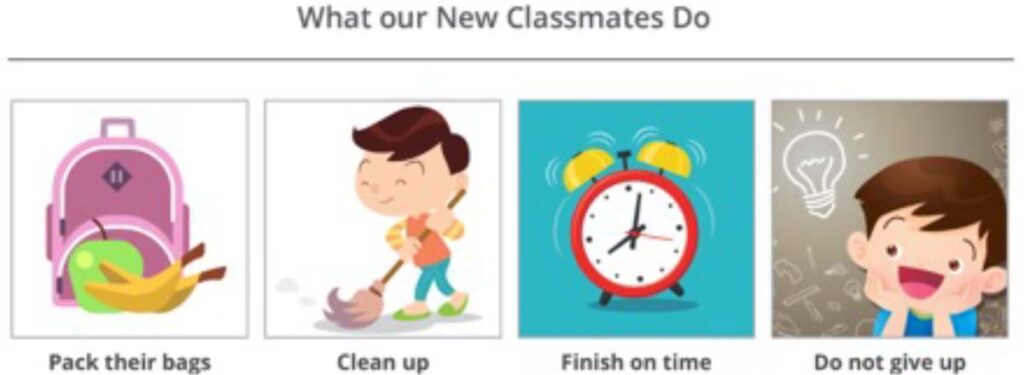
STEP 2. BEHAVIOUR
Identify the behaviours your children need to practice to strengthen the five social-emotional skills (5 Keys) (use Program Achieve Early Childhood – Lesson 2).
Say to your children that you want them to learn to behave like each character because this will help them to do their best, be happy and get along with everyone.
STEP 3. SELF-TALK
Teach your children about self-talk and how each character thinks (use Program Achieve Early Childhood – Lesson 2 and other lessons).
Some (but not all) young children can understand the meaning of self-talk. As you use the term repeatedly in the lessons and at other times, children begin to understand that self-talk refers to what they say to themselves that helps them know what to do. The terms ‘self-talk’ and ‘thinking’ are synonymous in this program. Examples of what some teachers say to children to begin the process of understanding self-talk are:
Self-talk is what we think up here (point to your head). … It is the pictures we have in
our minds. … We need to talk to ourselves to tell us what to do. … It is our imagination. …
Self-talk is like talking to yourself with your lips closed.
You can display examples of self-talk in your classroom posters and photos depending on the age of your children. Examples can be inserted within thought clouds/bubbles: “I can keep trying when things are hard.” “I know if I try hard, I can do it.” “The more I try, the better I get.”
Tell your children that you want them to learn to think and have self-talk like each character because this will help them do their best, be happy and get along with everyone.
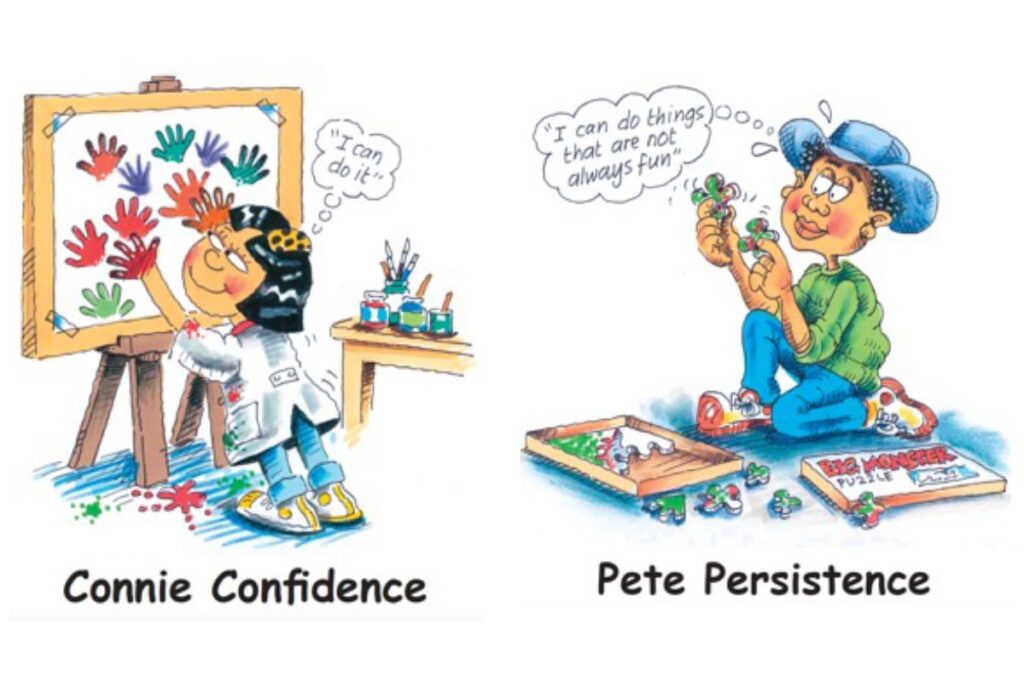
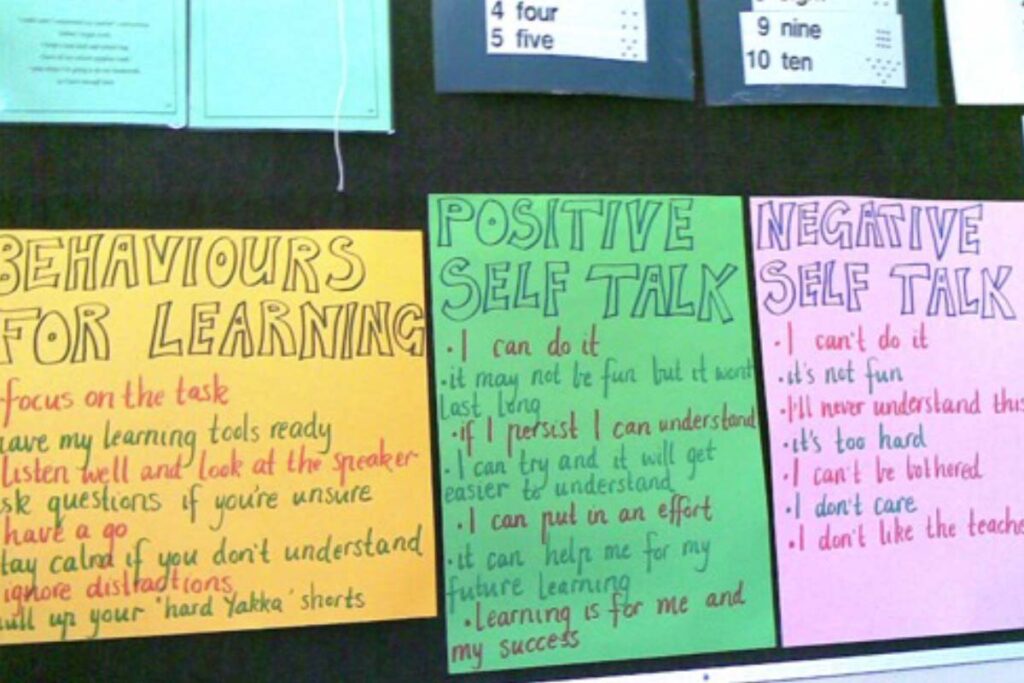
STEP 4. CLASSROOM POSTERS
In your classroom, select an area of a wall easily viewed by children; display hand-made posters with a picture of each of the 5 Keys (you can include a picture of each puppet) that describes:
1. Behaviours for children to practice, and
2. Self-talk that helps them learn each of the 5 Keys (refer to the YCDI! Quick Reference Early Childhood Cards, which can be found in your LOGIN at the beginning of Program Achieve’s lessons).
STEP 5. CATCH THEM IN THE ACT
Communicate behaviour-specific feedback when you see individual children demonstrating the 5 Keys in their behaviour (for examples of what to say, refer to the Early Childhood Program Achieve Quick Reference Cards found when you log into the program’s lessons).
While praising the quality of their work and how well they perform is essential – especially when it conveys information back to children concerning the quality of their work – it is most important to catch children in the act of or just after they have been confident, persistent, organised, getting along and resilient. Acknowledge children with a ‘tangible’ when they display behaviour reflecting one of the SELs. A school we know employs ‘Hug Notes’ that are acknowledgments given to children to take home to claim a ‘hug’ for showing one of the SELs at school. Consider pairing your behaviour-specific feedback with your style of classroom rewards.
Here’s an example of a swimming teacher offering behaviour-specific feedback to a young child learning to swim (“Just like Connie Confidence, you are being very brave even though I can see it’s a bit scary for you.”).
When you catch a child practising behaviour that reflects a YCDI! Key, acknowledge them (e.g., ‘You were confident.’ ‘You tried hard and did not give up. That’s persistence.’ ‘Doesn’t it feel good to be organised?’ ‘You are getting along very well when working together.’ ‘You stayed calm in a difficult situation. That’s resilience.’).
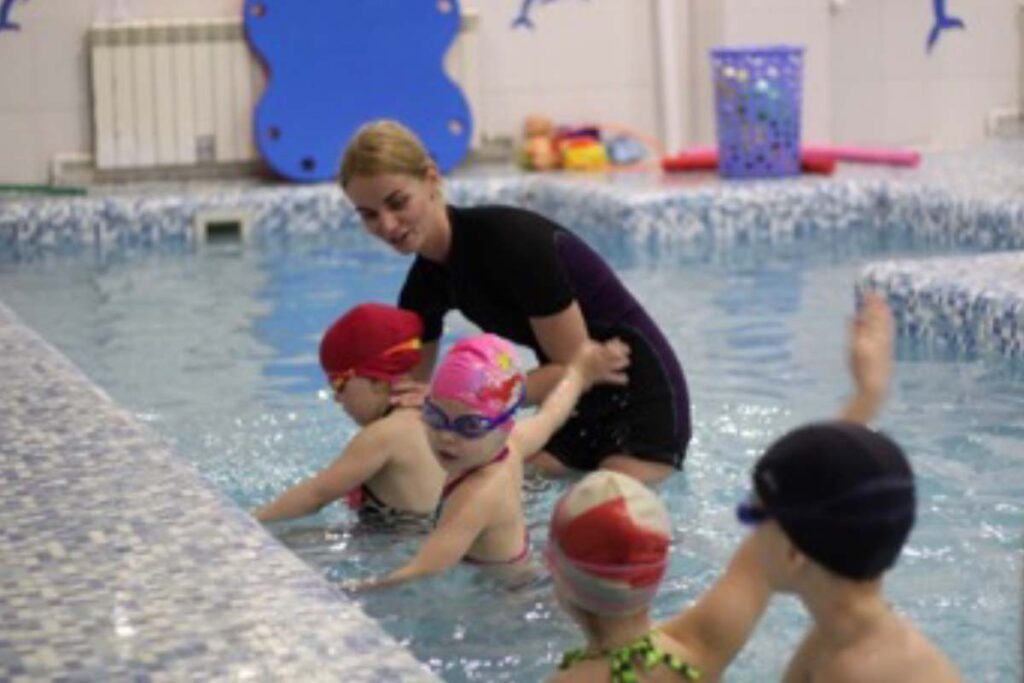
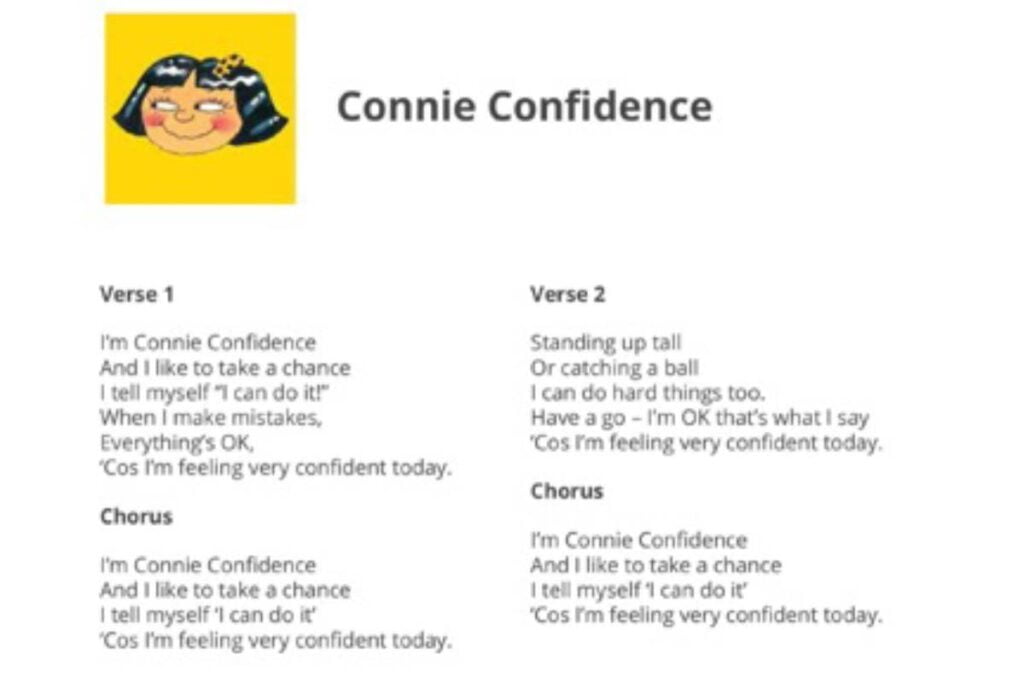
STEP 6. MAKE IT FUN
Select songs that children can sing that demonstrate one of the 5 Keys; select examples of stories from young children’s literature to read aloud that portray a character demonstrating one or more of the 5 Keys.
In the Program Achieve Early Childhood program, you will find six recorded songs with lyrics that young children love to sing: I Can Do It, Connie Confidence, Pete Persistence, Oscar Organisation, Gabby Get Along, and Ricky Resilience. When reading stories with children, it is good to look for examples of the 5 Keys displayed by the characters. You can also discuss any problems a character may have because they do not possess one or more of the Keys. You can catalogue your books according to the Key they illustrate. Lists of books with characters who do/do not demonstrate each of the 5 Keys can be found in the program.
STEP 7. MAKE IT VISUAL
Construct a YCDI! Wall Display: show pictures of people demonstrating the 5 Keys; have children draw and paint themselves as confident, persistent, organised, getting along, and resilient; display signage/posters outside the 5 Keys
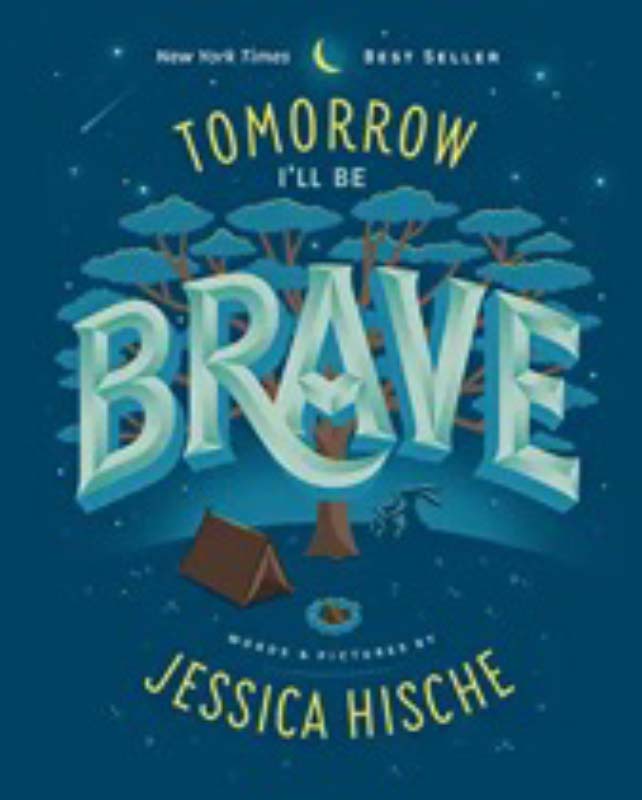
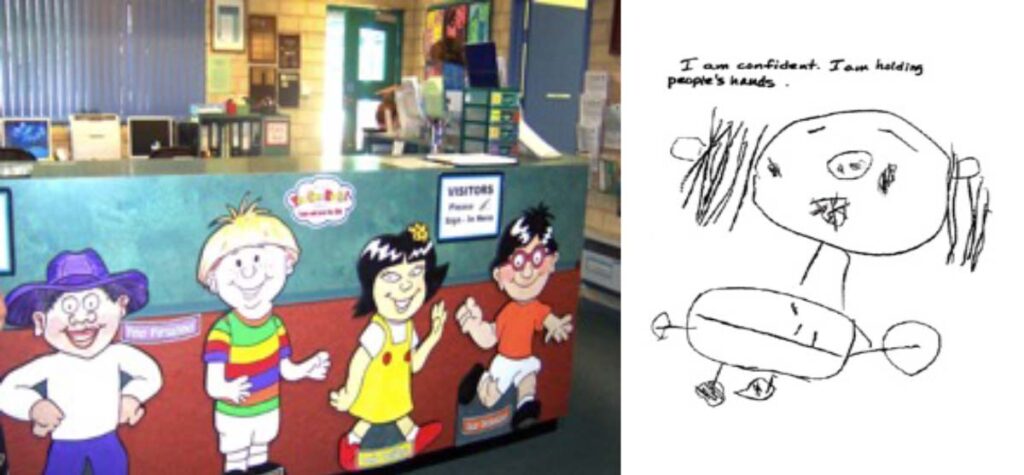
STEP 8. DAILY REMINDERS
To begin, end and throughout the day, remind children how to be confident, persistent, organised, to get along, and resilient.
Helping develop in your children a You Can Do It! ‘mindset’ can occur at the beginning of each day. Through Daily Reminders, children will become more aware of what they have previously learnt about what to say to themselves (self-talk) and do throughout the day. This photo has a teacher reminding her children to use one of the Keys.
It can help to take a few moments at the beginning of each day to review content from lessons that have already been taught and to expressly state what behaviours children should try to demonstrate and the self-talk to use during the entire day. At the end of each day, you can ask children to volunteer to say which of the 5 Keys they used during the day that helped them. For older children, you can ask them to say whether they saw any of their classmates using one of the Keys.
STEP 9. MAKE IT MEASURABLE
Plan to survey the development of your children’s social-emotional learning skills during the year.
This program contains a survey assessing young children’s social and emotional skills. You can employ the survey to determine the strengths and needs of one or more of your children. The results can help you pinpoint areas to focus on when employing the practices described in this program. You may also elect to survey all your children early and again later in the year to assess the program’s impact and the development rate of their social-emotional skills.
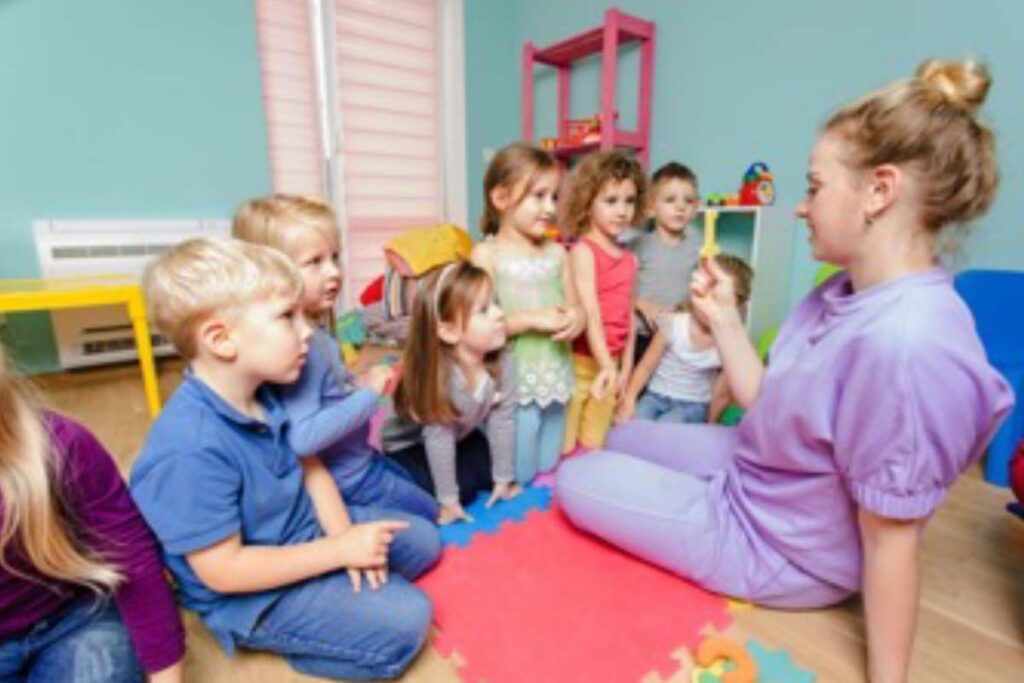
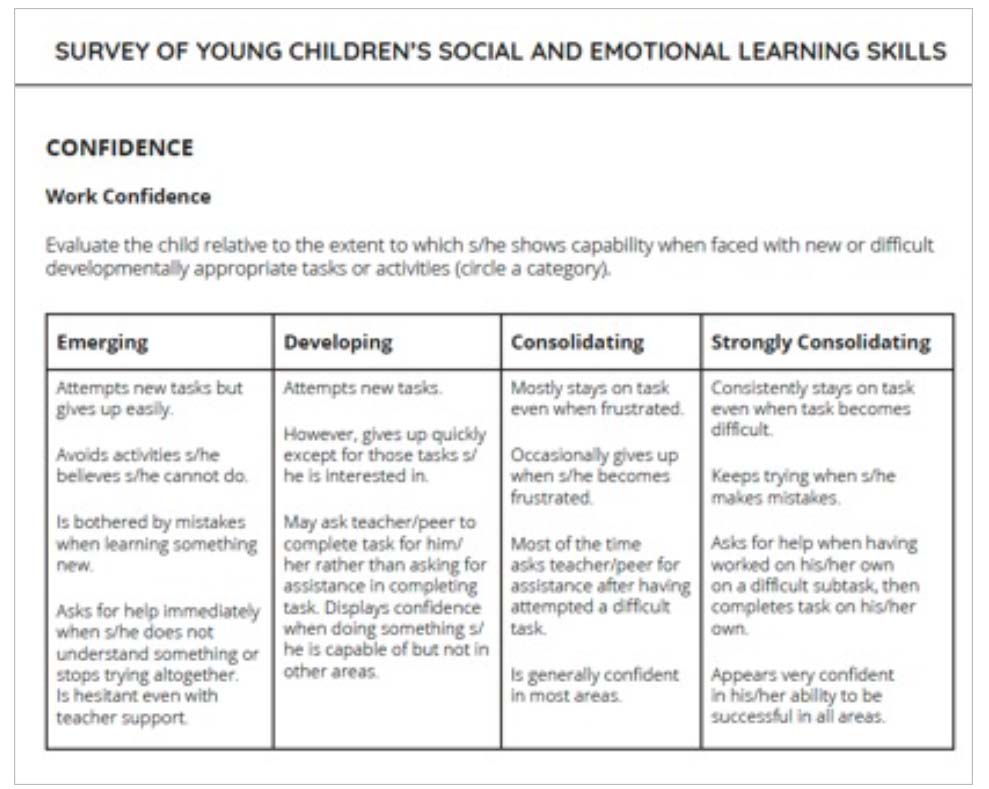
STEP 10. MAKE IT COLLABORATIVE
Through your school-home newsletter, parent education and information sessions, parent conferences, and parent print material, inform how they can support their children’s social-emotional learning.
Many early childhood education centres and schools are introducing You Can Do It! Education in the form of the 5 Keys to parents as early in the year as possible. Some teachers utilise a parent collection point to communicate YCDI! messages to parents that they can reinforce with their children at home. You can rotate displays for parents on a notice board having at least one section devoted to the current You Can Do It! focus.
Our Parent Education Program offers you a structured presentation format for introducing the fundamentals of the YCDI! program to parents in a 10- to 15-minute introductory session. Also included are three additional parent information sessions you can present to parents that guide what parents can do at home to support what you teach your children in the YCDI! program. You will also find a variety of school-home notes and parent information sheets that you can copy for parents and use in various ways.
By the end of the year, if the vast majority of your children use the 5 Keys and, most importantly, demonstrate behaviour and self-talk that reflects each of the 5 Keys, you will have done an excellent job -in addition to all the other great things you do- in helping them develop the self-belief, determination and calmness under pressure to transition successfully to their next year in school- and to be successful and happy far into the future.
YOU CAN DO IT!!!
